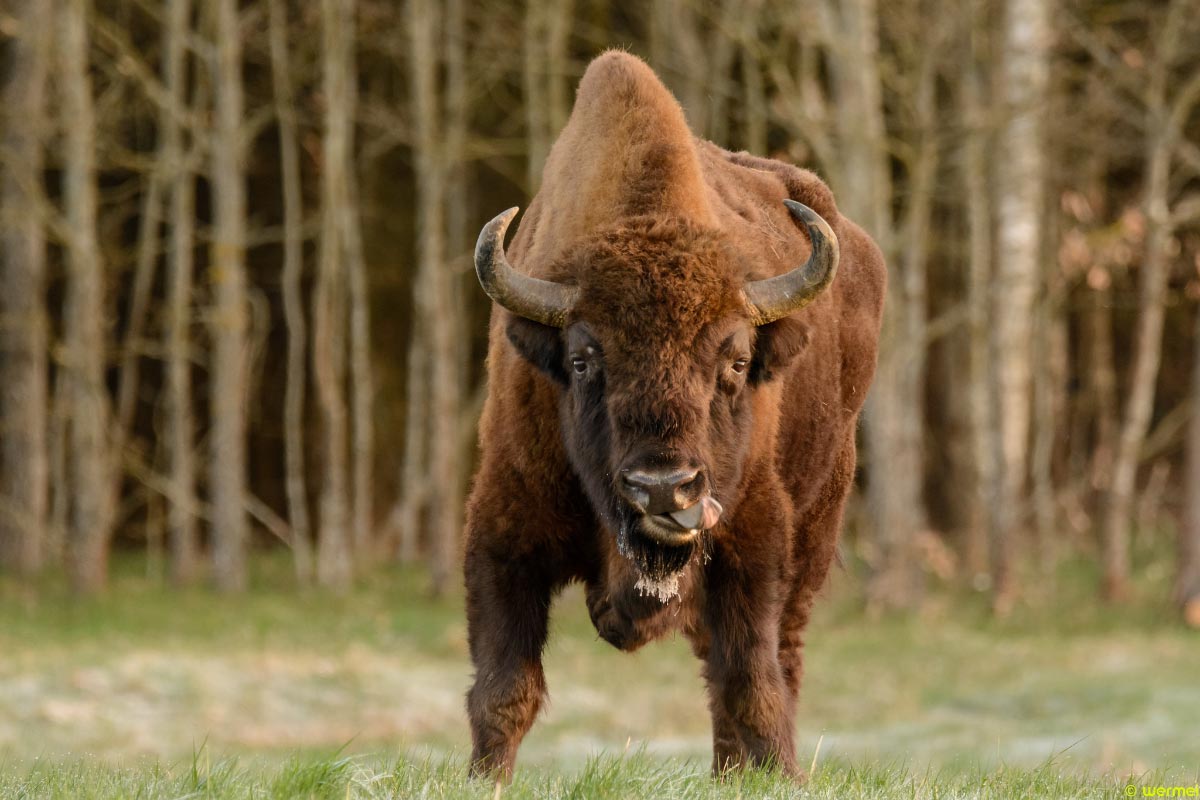Bison to be reintroduced to England
A small herd of European Bison will be released in Kent in spring 2022, Kent Wildlife Trust has confirmed, representing a major landmark in Britain's short rewilding history.
The Wilder Blean project will take place at Blean Woods, near Canterbury, famed for its ancient woodland, and is estimated to cost £1m. Steppe Bison were last found in Britain some 6,000 years ago and the descendant of this species – European Bison – is listed as Vulnerable, meaning the Kent project will help secure the future of an endangered species.

This European Bison is part of a succesfully reintroduced population in Eastern Poland (wer mei / flickr.com).
Furthermore, they will naturally regenerate a former pine wood plantation by killing off trees, creating a healthy mix of woodland, scrub and glades, boosting insect, bird and plant life – it is hoped Common Nightingale and European Turtle Dove will both benefit. During the initial phase, one male and three females will be released. Natural breeding will increase the size of the herd, with one calf per year the norm for each female.
The bison will come from The Netherlands or Poland, where releases have been successful and safe. Paul Hadaway, from Kent Wildlife Trust, said: "The Wilder Blean project will prove that a wilder, nature-based solution is the right one to tackle the climate and nature crisis we now face. Using missing keystone species like bison to restore natural processes to habitats is the key to creating bio-abundance in our landscape."
The project, funded by the People's Postcode Lottery Dream Fund, will cover 500 hectares (1,236 acres), with the bison first placed in a 150-hectare area where there are no right-of-way footpaths. This will provide plenty of space for them, even as the herd grows, according to Smith, and normal cattle fencing is sufficient to stop them wandering further afield.
Once the bison are settled, the public will be able to visit the area with rangers and watch the animals from viewing platforms. In The Netherlands, where bison projects have been running for 15 years, people walk through the areas without incident. Free-living longhorn cattle, "iron age" pigs, and Exmoor ponies will also live alongside the bison and assist in restoring the woodland.
"The partners in the Kent project have long dreamed of restoring the true wild woodlands that have been missing from England for too long," said Paul Whitfield, of Wildwood Trust, the native species conservation charity that will ensure the welfare of the bison. "People will be able to experience nature in a way they haven't before, connecting them back to the natural world around them in a deeper way."
The bison will not be given any food or artificial shelters, though their health will be monitored by observing their coats and examining their dung. "We need to keep them as wild as possible," said Smith, who added there was no intention to introduce predators such as wolves. As the herd grows in size, the plan is to move some animals to other sites in the UK. But, he said, "if we absolutely had to, we would cull animals as a last resort".

